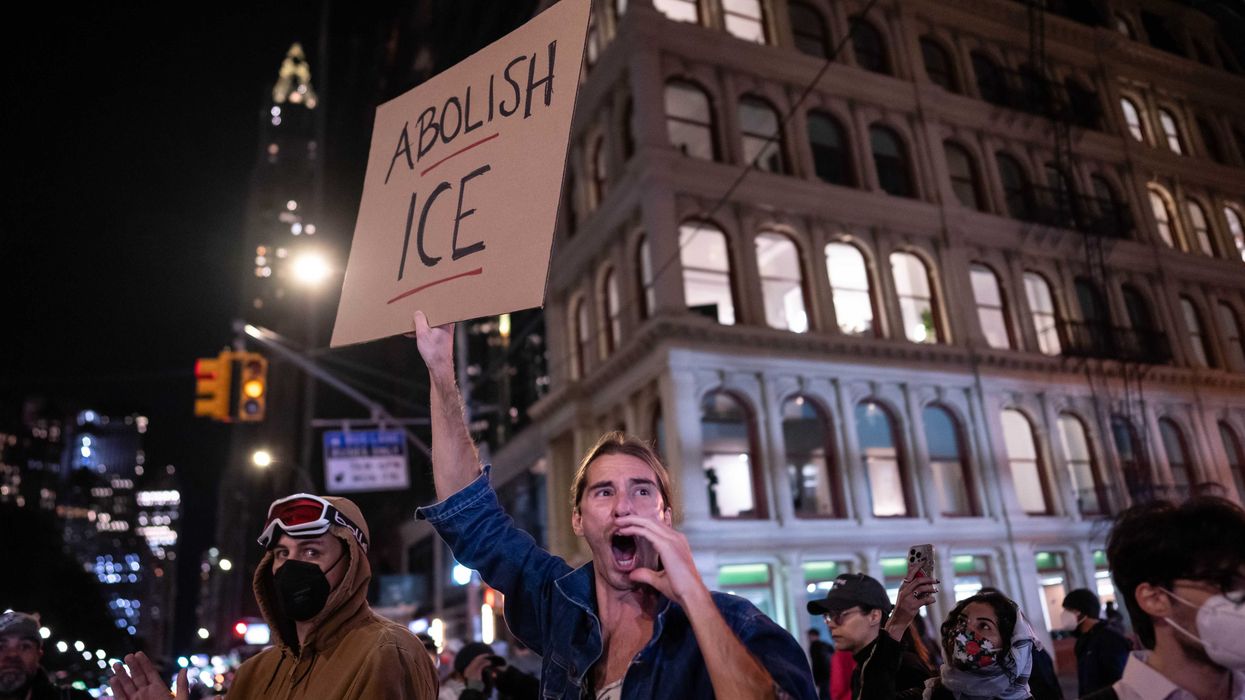A church in Louisiana is being told to shush up---or at least keep it down.
After gaining permission from the city to hold tent services while their church building underwent construction, the pastor of Vintage Church in Metairie is now being told to keep the noise at 60 decibels.
How loud is 60 decibels, you ask? Surely that level would allow for some good ol' time religion, right? A solid round of preaching and a few hymns?
Wednesday on The Glenn Beck Program, Glenn asked the $64,000 question. Just how loud is 60 decibels? Like a jackhammer? Maybe a boombox?
"We had a decibel meter in here yesterday," Glenn said. "I'm going to show you how loud---I'm not kidding---61 decibels is. You ready? Quiet, please. Here we go. This is 61 decibels."
That's right, the studio with only air handlers and the sound of running equipment hit 61 decibels. No talking, no back-and-forth bating, no Jeffy complaining, nada.
An outraged Glenn noted that the pastor of the church has been fingerprinted twice in front of his congregation, as well as twice fined $500. Christmas services were canceled because the city next threatened the pastor with six months in jail time.
Vintage Church Executive Pastor Matthew Brichetto has sued the sheriff and Jefferson Parish government in the 24th Judicial District Court in Gretna, seeking a temporary injunction to keep their services going in a tent in the church's parking lot.
Liberty Institute has also come on board to represent Vintage Church in their fight for religious freedom.
Sign a letter of support created by Liberty Institute that will go to the members of Vintage Church.
Below is a rush transcript of this segment, it might contain errors.
GLENN: Last night, on the TV show, we talked a little bit about anger, and how do you -- how do you not tolerate things? Because that's the problem. We have a toleration problem here in America. We've tolerated too much. And so how do we not tolerate what's going on without getting angry? And we told a couple of stories that I want to pass on.
There's a church in Louisiana, in New Orleans, that has had to restore their church. They had some problems. They had to restore their church. And so they have built a tent outside. They got permission from the city to build a self-enclosed tent with the heaters and air-conditioning and everything else, while they work on their building. Well, neighbors complained.
Now, there's a picture of the tent. You can see, it's a nice tent. It has doors on it, et cetera, et cetera. The neighbors complain it is right next to the church building. Neighbors complained that it was too loud. So the city got together and they have an ordinance that churches cannot be louder than 60 decibels.
Now, we're in the audio business. Pat, Stu, do you have any idea how loud 60 decibels is?
STU: Not off hand, no.
GLENN: Do you want to take a guess? How loud do you think it has to be before they shut this -- now, here's the deal. They have already gone into this church.
PAT: Uh-huh.
GLENN: And they have fingerprinted the pastor twice in front of the congregation. They have given him a 500-dollar fine twice. They canceled their Christmas services because of the city, because they've told the pastor, "Next time, six months in jail." How loud is 60 decibels? Guess.
PAT: I'm going to say, more than 59. But less than 61.
(laughter)
GLENN: No, come on. Like jackhammer. What is 60 decibels.
PAT: Oh, less than a jackhammer.
JEFFY: Oh, my gosh.
GLENN: Boombox?
JEFFY: Yeah. Car radio turned up. Turned up to the max.
GLENN: Let me give you a hint. You pick up the phone, you hear the dial tone. You remember when you used to pick up the phone and have a dial tone? You pick up the phone and have a dial tone, how loud do you think that dial tone is to your ear, on a decibel meter? Eighty.
JEFFY: No.
GLENN: We had a -- yes, we had a decibel meter in here yesterday. I'm going to show you how loud -- I'm not kidding -- 61 decibels is. You ready? Quite, please. Here we go. This is 61 decibels.
That's it.
STU: That was nothing.
GLENN: This room, with the air handlers and the sound of the equipment in this room -- quiet, is 61 decibels.
PAT: Are you sure something wasn't --
GLENN: I'm positive.
PAT: -- wrong with your decibelometer?
(laughter)
GLENN: No, I'm positive. The sound of an air-conditioning unit turning on is about 60 decibels.
PAT: Wow, that's amazing.
GLENN: So the church -- they've stopped all amplification. It wasn't good enough.
PAT: Hmm.
GLENN: The pastor told everybody, "Next Sunday, when you come in, we have to be very, very quiet. So I'm not going to use any amplification, and I'm not speaking any louder than this."
As I'm speaking to you now, it is over 60 decibels. This (claps once) is 73. What the hell is happening? What the hell is happening?
STU: Interesting word choice. Good question.
GLENN: Yes. And, by the way, by the way, they've argued this in court and lost. And one of their defenses is, excuse me, there is destruction going on, and the city is using jackhammers which are 120 decibels. It's a power of ten each time. Each -- it's exponential.
STU: Right.
GLENN: So it's 120 decibels for a jackhammer, and that's fine on a Sunday morning. But 60 decibels in our church, on our property, is not. What's going on?
Featured Image: Photo Credit: The Liberty Institute

 AASHISH KIPHAYET / Contributor | Getty Images
AASHISH KIPHAYET / Contributor | Getty Images
 Harold M. Lambert / Contributor | Getty Images
Harold M. Lambert / Contributor | Getty Images Adam Gray / Stringer | Getty Images
Adam Gray / Stringer | Getty Images Anadolu / Contributor | Getty Images
Anadolu / Contributor | Getty Images